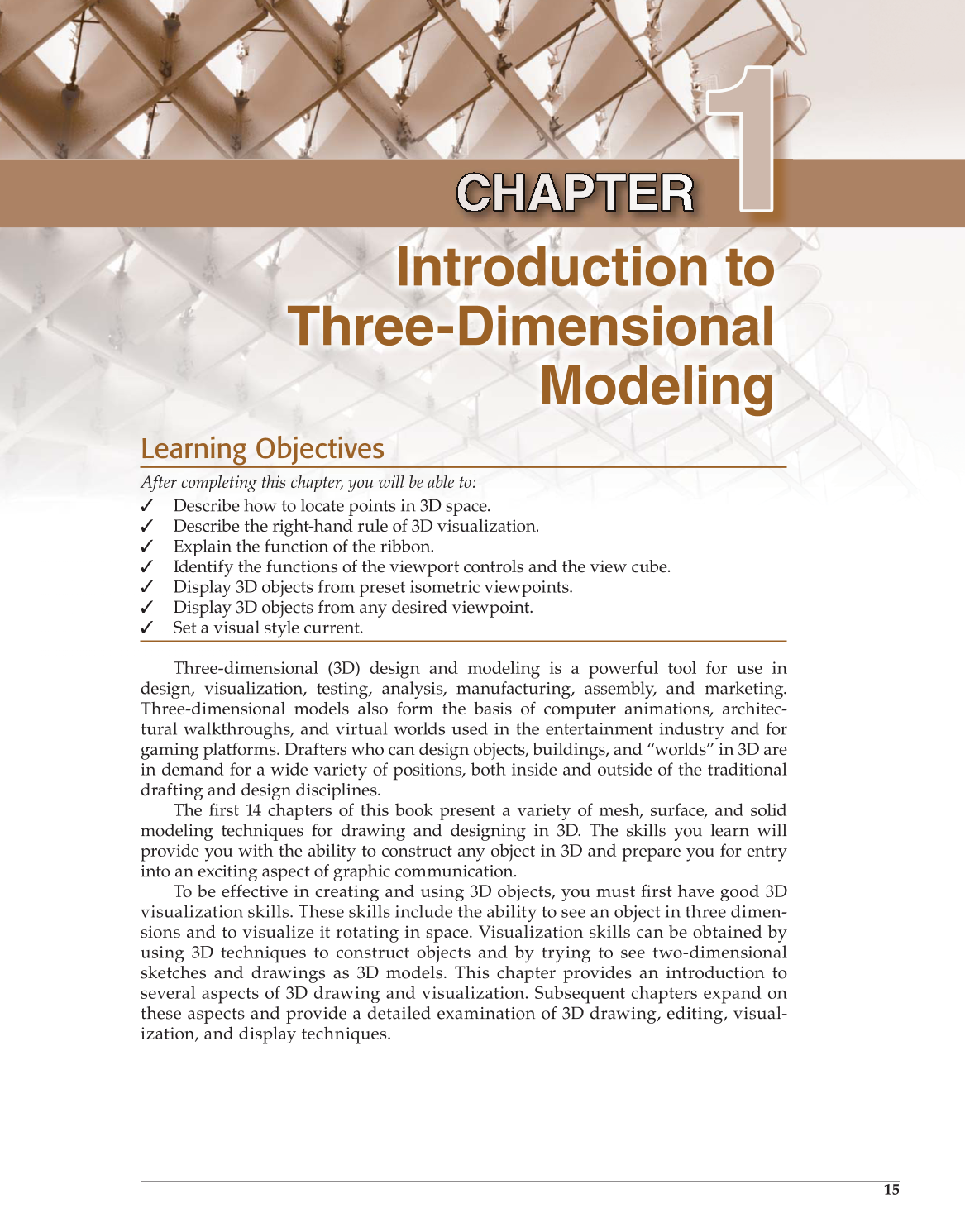15
Introduction to
Three-Dimensional
Modeling
1 1
Learning Objectives
this chapter, After completing t p you will be able to:
✓ to locate Describe how o c points in 3D space.
✓ right-hand Describe the e h rule of 3D visualization. .
✓ ✓ functio Explain the on of the ribbon Explain the on of the ribbon.
✓ functions Identify the o of the viewport controls and the view cube. u
✓ objects Display 3D from preset isometric viewpoints.
✓ objects Display 3D from any desired viewpoint.
✓ style current. Set a visual u
Three-dimensional (3D) design and modeling is a powerful tool for use in
design, visualization, testing, analysis, manufacturing, assembly, and marketing.
Three-dimensional models also form the basis of computer animations, architec-
tural walkthroughs, and virtual worlds used in the entertainment industry and for
gaming platforms. Drafters who can design objects, buildings, and “worlds” in 3D are
in demand for a wide variety of positions, both inside and outside of the traditional
drafting and design disciplines.
The fi rst 14 chapters of this book present a variety of mesh, surface, and solid fi
modeling techniques for drawing and designing in 3D. The skills you learn will
provide you with the ability to construct any object in 3D and prepare you for entry
into an exciting aspect of graphic communication.
To be effective in creating and using 3D objects, you must fi rst have good 3D fi
visualization skills. These skills include the ability to see an object in three dimen-
sions and to visualize it rotating in space. Visualization skills can be obtained by
using 3D techniques to construct objects and by trying to see two-dimensional
sketches and drawings as 3D models. This chapter provides an introduction to
several aspects of 3D drawing and visualization. Subsequent chapters expand on
these aspects and provide a detailed examination of 3D drawing, editing, visual-
ization, and display techniques.
